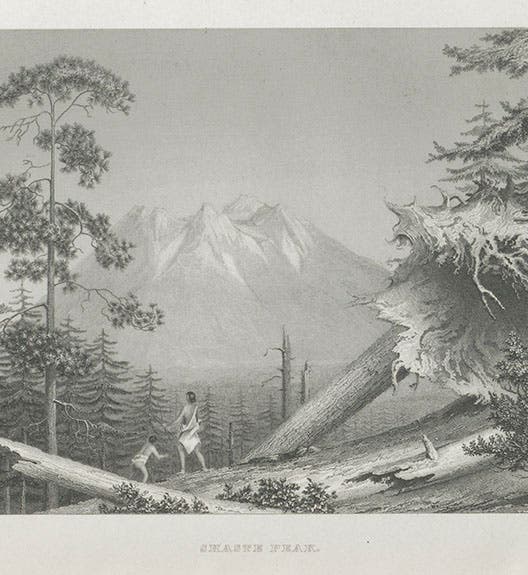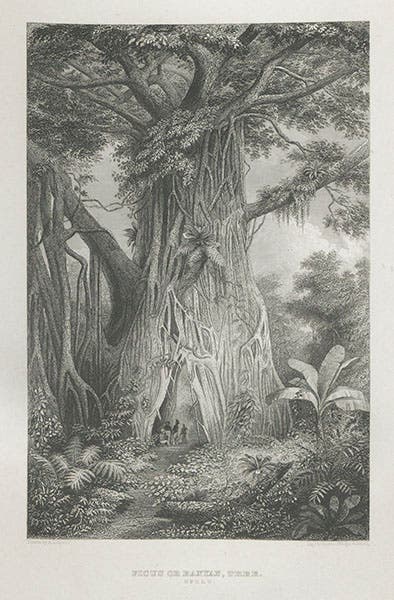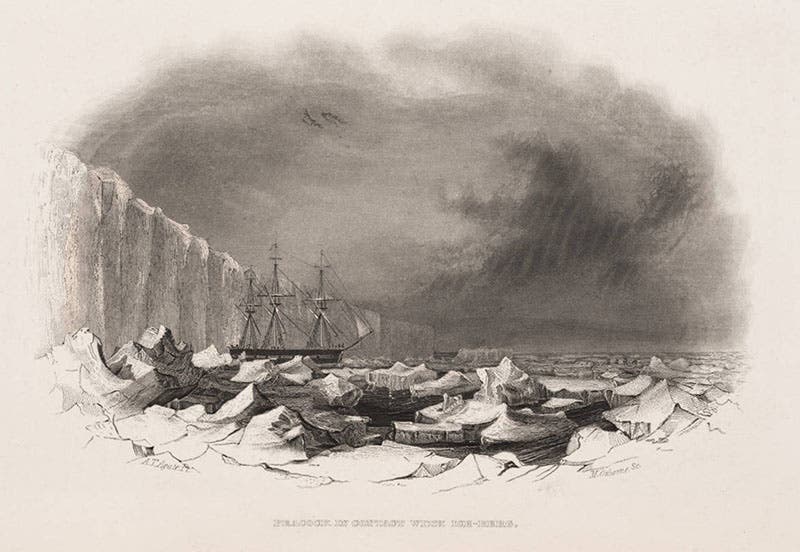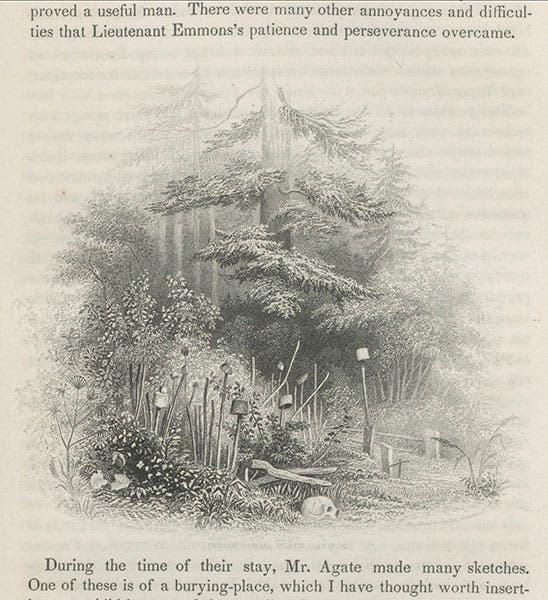Scientist of the Day - Alfred T. Agate
Alfred Thomas Agate, an American artist and explorer, was born Feb. 14, 1812. Agate made a respectable living in the 1830s doing portraits, especially miniatures, some of which you can find in the Metropolitan Museum of Art and other American art museums. But in 1838, Agate gave up city life and signed on as botanical and landscape artist for the United States Exploring Expedition, our country's first national scientific voyage. The five ships, commanded by Lt. Charles Wilkes, spent 4 years sailing around the world in southern latitudes, looking for the suspected Antarctic continent (unsuccessfully), collecting specimens in a variety of locations, visiting many of the Polynesian islands, and stopping off on the northwest coast of North America. When Wilkes published the 5-volume Narrative of the voyage in 1845, a majority of the 350-plus illustrations were based on sketches and drawings by Agate.
Perhaps the most famous engraving in the Narrative shows Mt. Shasta in the Cascades of Northern California (or Shaste Peak, as Wilkes called it); it is in fact the first recorded image of Mt. Shasta (first image). Less well known, but hardly less magnificent, are some of the drawings that Agate made on some the islands of the Pacific, such as one of a ficus or banyan tree on one of the islands of Samoa (second image). Agate also did a number of sketches of the expedition ships, such as this dramatic depiction of the USS Peacock framed against a towering ice sheet (third image).
Some of Agate's paintings of sites on the Oregonian coast, other than the drawing of Mt. Shasta, are of historic interest. He made a drawing of Fort Astoria at the mouth of the Columbia River (fourth image). Another, this one a text wood engraving, depicted a native American burial site (fifth image).
Many of Agate's drawings from the Wilkes expedition survive in the Agate Collection in the U.S. Navy Art Collection. You can consult an online exhibition of many of these sketches here. Among the sketches and drawings is the original of the "Mt. Shaste" sketch, where the mountain can barely be discerned in the background.
Another original Agate work, an oil painting on board, captures the moment when the Peacock foundered on a sand bar at the mouth of the Columbia River and broke apart, fortunately without loss of life (seventh image)
There are many editions of the Wilkes Narrative, but only the first edition, with two issues (the first issue a small run, for private distribution; the second, the so-called “imperial octavo edition”), has the Agate plates. Up until 2008, we had an 1845 second edition, which omitted all the plates. Then, with the help of the Julia and Humbert Tinsman Fund, we were able to purchase an imperial octavo edition with all of Agate’s engravings, just in time to be included in the online version of our Ice: A Victorian Romance. Of the pair of engravings shown on that webpage, the first was drawn by Wilkes, and the second by Agate.
Most portrait artists leave behind an abundance of self-portraits, but not Mr. Agate. There is only one self-portrait attributed to him, reproduced on all the biographical websites and on Wikipedia, but no one seems to know where it is or anything about it, so we choose to be skeptical of its authenticity and do not include it here. One would think there must be a self-portrait somewhere in the Navy Art Collection, but if it exists, we have not been able to run it down.
Dr. William B. Ashworth, Jr., Consultant for the History of Science, Linda Hall Library and Associate Professor emeritus, Department of History, University of Missouri-Kansas City. Comments or corrections are welcome; please direct to ashworthw@umkc.edu.












